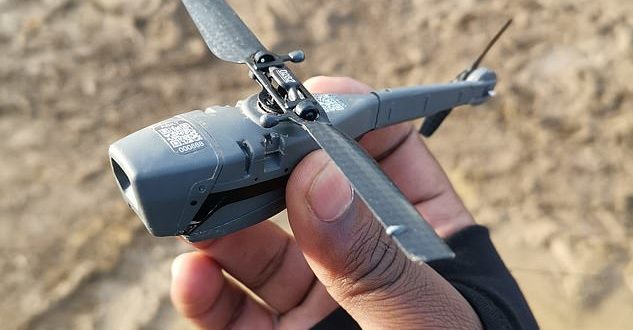Help is at hand for troops on the front lines thanks to palm-sized drones developed by the the Ministry of Defence (MOD).
British Army plans will see 200 miniature drones ‘smaller than a human hand’ deployed on the battlefield to provide soldiers with an eye in the sky.
These mini-drones, dubbed Black Hornet, could take over the life-threatening surveillance and reconnaissance duties currently undertaken by soldiers.
The MOD is investing £66million ($87m) in robotic systems, which will also include automated supply delivery drones.
Scroll down for video
TheBlack Hornet3 is the world’s smallest tactical nano UAV (unmanned Aerial vehicle) and is used by the British military on the front line. It is controlled using a one-handed thumb stick and troops can watch its HD surveillance video stream live on a smartphone
Investment into robotic technology include the mini drones that will cost the MOD around £31million ($41m).
The drones weigh less than seven ounces (200g) and can carry out surveillance over a wide area.
Defence Secretary Gavin Williamson announced the project during his speech at the Autonomous Warrior Exploitation Conference in London.
He said: ‘From the platoon up to the division, our troops will now have a priceless eye-in-the-sky, giving them the greater situational awareness they need to out-manoeuvre and out-fox our adversaries.’
A further £23million ($30m) will be spent on unmanned ground and airborne vehicles that can resupply troops on the frontline, cutting risk and allowing personnel to ‘focus on combat roles’.
Mr Williamson also revealed that another £12million ($15m) will be spent on systems that can be added to existing armoured vehicles, allowing them to be operated and controlled remotely.
These will be pushed ahead of manned vehicles and used to test the strength of enemy defences.
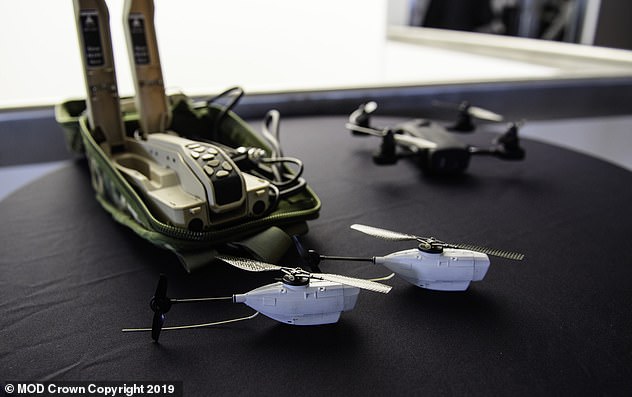
A selection of mini drones UAV’s (Unmanned Aerial Vehicle), used by the UK armed forces which includes the black hornet (pictured – bottom). The Defence Secretary said that some of the robotic kit ‘is already set to deploy to Estonia, Afghanistan and Iraq by the end of the year’
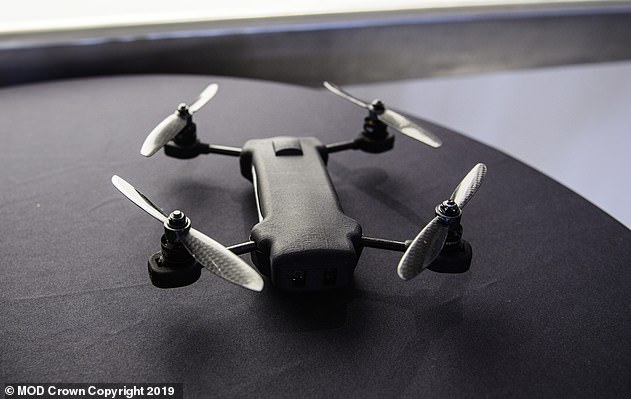
In a move to bring the latest ‘cutting-edge’ AI technology to the frontline, the British Army will deploy around 200 mini drones ‘smaller than a human hand’ in the battlefield
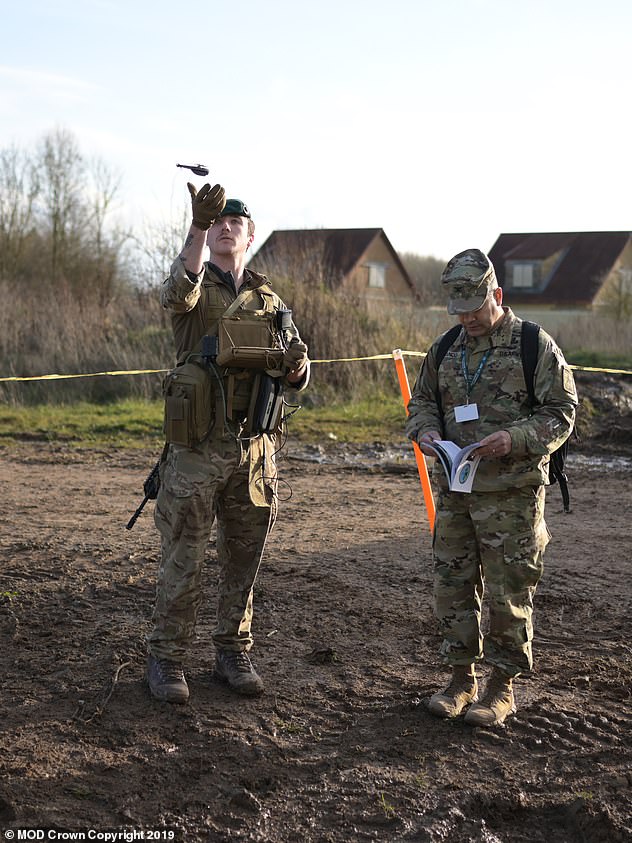
Quizzed on how quickly the new robotic technology will be brought to the frontline, especially given delays in other equipment programmes, the Defence Secretary said there is ‘no reason to assume we won’t be having them this year’
Mr Williamson said that the new technologies will make sure the Army has the very best and the ability to use its full force.
He said Britain is ‘leading the world’, and taking the opportunity to bring in new technology and embrace it, which is being done in a ‘much more rapid way than virtually any other nation’.
The investment comes after the month-long Exercise Autonomous Warrior last year, in which a range of systems were tested during what marked the biggest British military robot exercise.
Mr Williamson added: ‘In a more dangerous and deadly era, we are not sitting around waiting for inspiration to strike. We’re seizing the opportunities to step up.’
He added: ‘Innovation will count for nothing unless we get great ideas off the drawing board, into production and out to the frontline.’
Mr Williamson also highlighted how some of the new robotic kit ‘is already set to deploy to Estonia, Afghanistan and Iraq before the end of the year’.
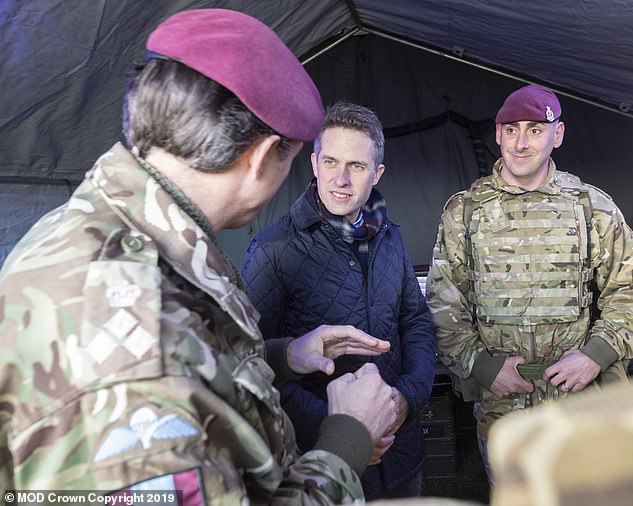
The Defence Secretary Gavin Williamson also revealed that another £12 million will be spent on systems that can be added to existing armoured vehicles, allowing them to be operated and controlled remotely
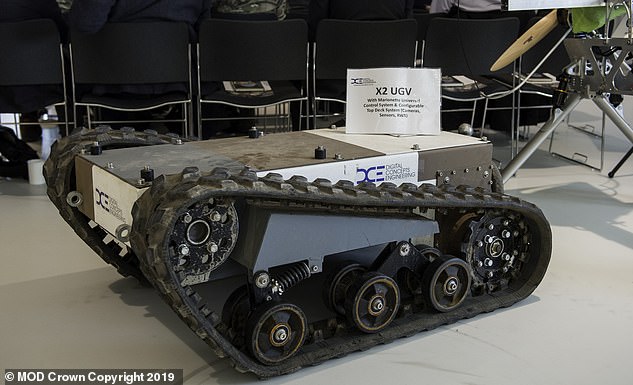
Robotic combat vehicles such as mini tanks will also be used in war zones such as in the delivery of supplies so that soldiers can concentrate on combat
Quizzed on how quickly the new technology will be brought to the frontline, especially given delays in other equipment programmes, he said there is ‘no reason to assume we won’t be having them this year’.
He said: ‘We hope to bring them to our forces as rapidly as possible,’ Mr Williamson told the Press Association.
‘Part of the development of this new technology is about usage, it is not about keeping it away from the frontline, it’s not about keeping it away from our forces.
‘It is about getting our Army to use them, to learn from them and how we can continue to improve what we are doing so we can start leaping ahead in terms of the technological advances.’
Welcoming the announcement, head of the Army, General Sir Mark Carleton-Smith, said ‘rapid adaptation is an essential ingredient for success on the battlefield’.
‘The fielding of the next generation of armoured fighting vehicles and ground-breaking robotic and autonomous systems will keep the British Army at the cutting edge of battlefield technology, improving our lethality, survivability and competitive advantage,’ he added.
 Unmanned Aerial Vehicle The latest drone news
Unmanned Aerial Vehicle The latest drone news
